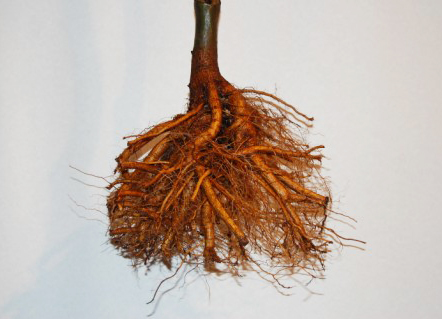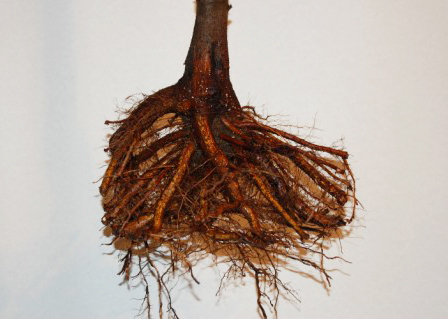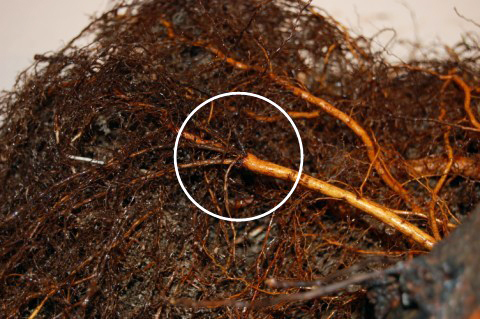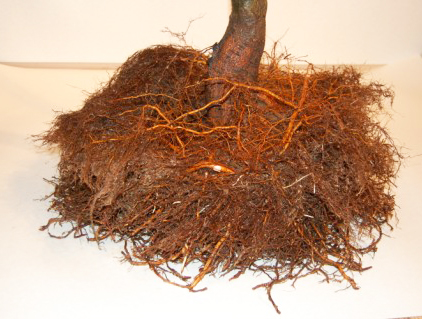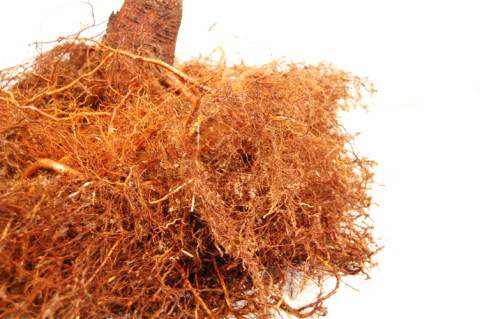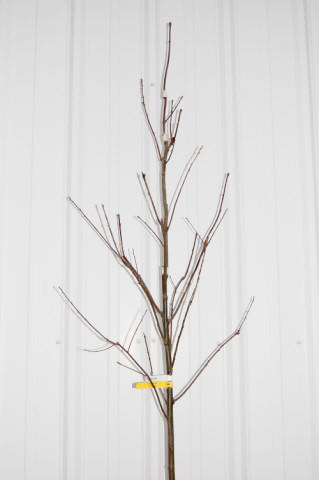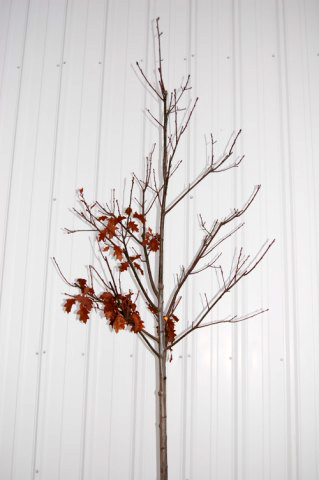Growing Techniques
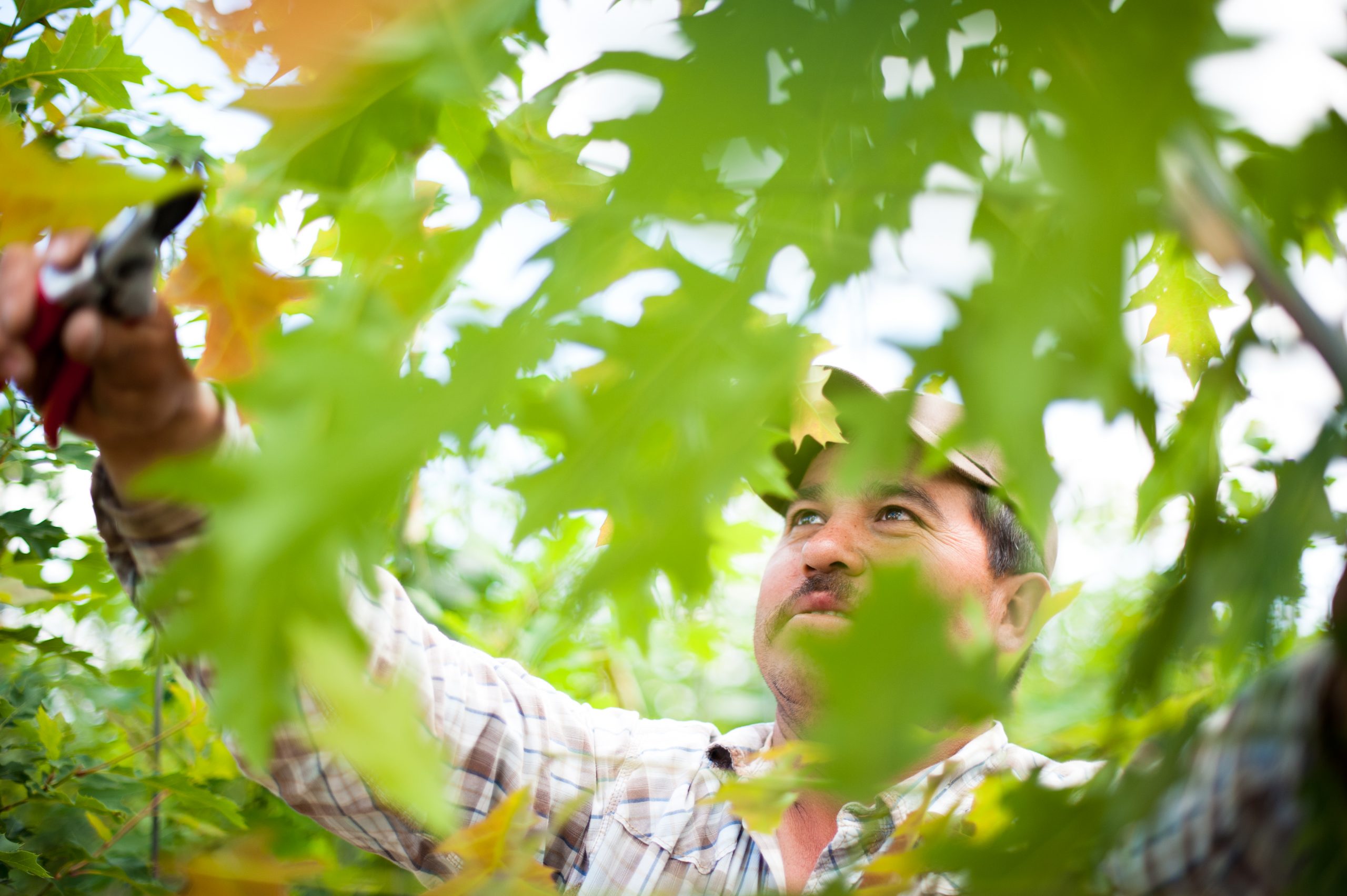
Building good roots
Kuenzi Sod and Nursery is a great place to buy trees for many reasons. In the first place, good decisions have to be made all along the process of growing our trees. Depending on the tree variety, additional care must be made in building the roots. Some trees do this well, others struggle in this category.
- For the trees that our nursery starts from seed, we start with the right kind of pots in the green house. We utilize a slit pot that air prunes the roots. This means when a root comes to the edge of the pot, it no longer grows due to coming into contact with air, this forces the roots to grow in other areas of the pot and eliminates circling roots or roots only found at the bottom of the pot. Learn more about the pots we use here.
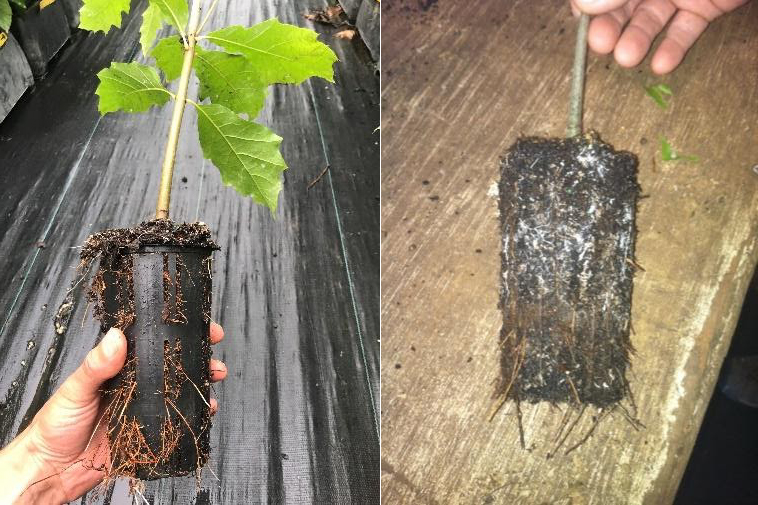
Good Reasons To Buy Trees From Us
- When buying in seedlings from our vendors, we make the choice between taking it directly to the field versus potting it up into a slit pot in the green houses. Trees that have a high mortality rate or slow to start in the field are often potted up and placed in the green house for a year of root building.
- When going to the field, decisions are made as to what tree liners can be grown as bareroot and which ones need to be in an in-ground fabric bag. Easy to transplant trees are grown as bare root, while the ones that suffer greatly in a transplant go to the in-ground fabric bag.
Growing Trees with In-Ground Root Control Bags
Kuenzi Turf & Nursery’s innovative in-ground root control bags began with a problem and an idea for its solution. We faced the challenge of growing robust root systems for increasing popular Oaks. Oaks have steadily gained popularity with people buying trees. In the landscape they can be challenging to grow. We needed a way to prevent root damage when digging.
Harvesting with traditional bare root methods or using balled and burlap significantly reduces a healthy tree’s root mass. This can send it into transplant shock and make it susceptible to pathogens right from the start.
People Like to Buy Trees such as Oak
Our most recent success story has been with hard to grow Oaks. Oaks are in high demand in the trade, but can be challenging to establish good quality roots. They responded well to our in-ground grow bag method, growing a bare root tree with a well balanced head, a strong root system, creating a swelled root tip that allows for a great energy release (new growth) upon planting. The root mass produced by the in-ground fabric bag will far out produce any other bare root Oak liner. When our customers buy trees from us, we now ship all our Oaks in our 10” fabric bag to protect the root system. Customers can remove grow bags upon arrival for repotting or plant directly in their fields.
Root control bags reduce the labor needed for digging and harvesting, but require more labor in the planting process..
There are many additional advantages:
- Ability to dig year round (Shade trees, not liners)
- Reduced soil compaction
- Maintains healthier roots than a field grown B&B (Hand or spade dug) trees
- Develop root nodules that are primed to thrive once planted
- Increase transplant success
You can see for yourself when ordering nursery products from Kuenzi Turf & Nursery how this growing method has become a hallmark for our company. We were proud to be featured in Nursery Management Magazine In-ground root control grow bags are now synonymous with Kuenzi Turf & Nursery high quality trees.
Buy Trees in a Root Control Bag
Many of our bare root tree line now ship in the root control bag, which can be removed before healing in, planting, or potting into a container. We use in-ground root control bags for all of our nursery products, 10” bags for Bare Root and 21” sized bags for Specimen Shade trees, and arborvitae (we are now starting to do Japanese maples in these bags, but they will not be available with this method for a number of years). Here’s what our customers have to say about our quality nursery products.
Bare root and Japanese Maple availability coming soon!
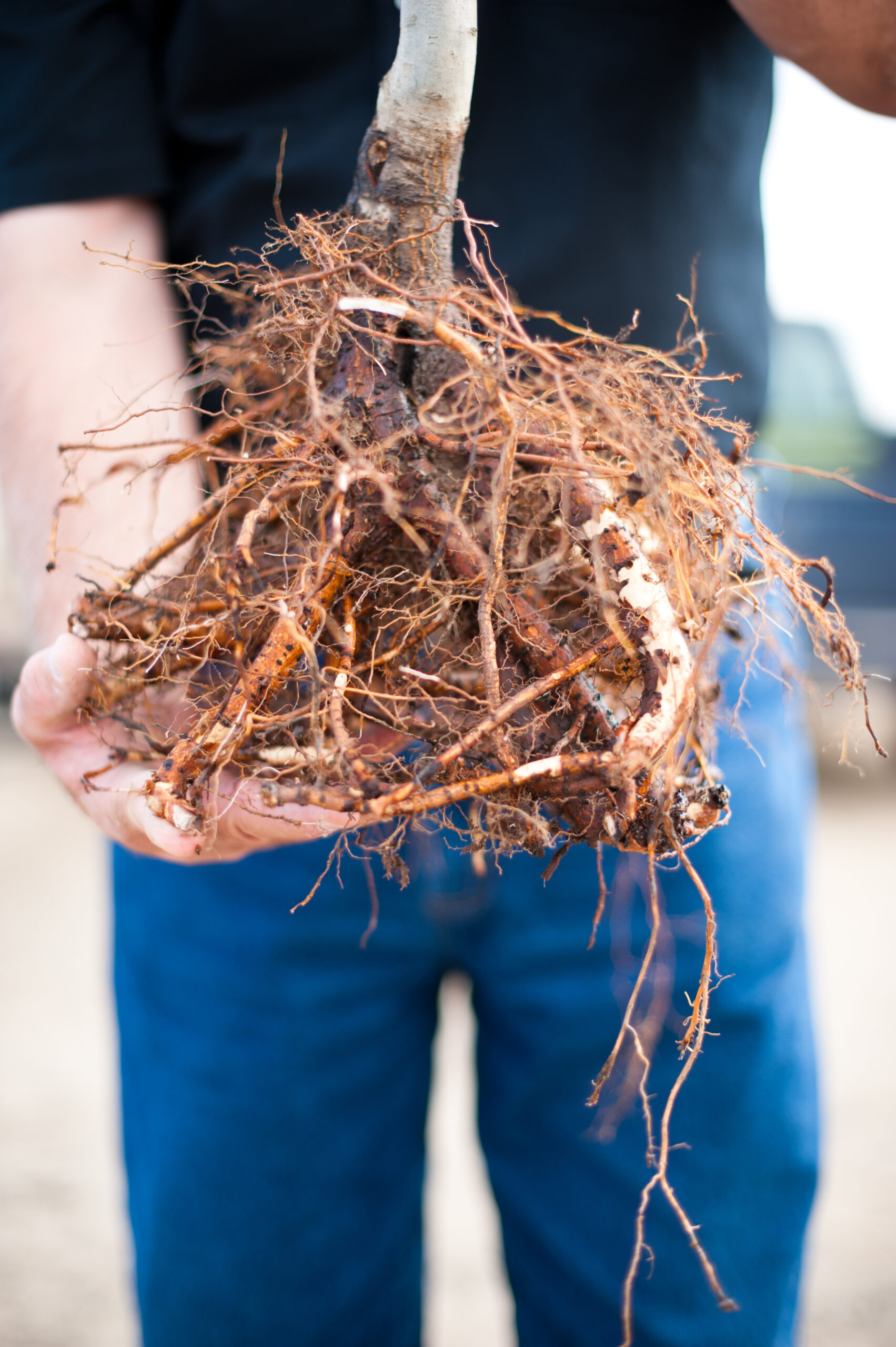
Case Study: Step by Step Success with Oak Production by growing in In-ground Root Control Bags
Step-by-Step process of Root Development of Northern Red Oak
Transplant success
In order to ensure our trees thrive in each transition, we take special care to ensure they are treated as well as possible during planting season. We plant during the spring and fall to ensure the best survivability for each of our trees. Some trees should not go out in the fall because they struggle with dieback while others need to be planted in the fall to root in, so they are ready to take off in the spring.
Our goal is to be able to take seedlings from our green house or our vendor and have no shock or stuttering. For trees coming directly from a covered green house, we apply several products (Nature Shield ™ and Purshade®) on the leaves to minimize transpiration, evaporation and sun damage. This acts like a sunscreen and helps protect the trees until they get acclimatized and grow sun leaves. We want our fall planted liner seedlings to maintain leaves for 4-6 weeks to start developing roots and store carbohydrates to ensure vigorous growth the following spring. Proper hydration and handling makes the difference in how our trees grow in our fields and our customers.
Branching structure
Our goal is to provide our customers with a tree with good branching structure. What this means is that we want our customers to be able to plant and let their tree grow without having to prune it right away. Less pruning for our customers means less labor and better-looking tree. We have studied and tested various pruning methods. For example, if we need better side branching, we prune the terminal (top) branch. This encourages side branching growth. The timing of pruning for bud set in the fall is critical in order to ensure the first push of buds in the coming spring is encouraging the right kind of branching. Even though we are dealing with a natural product, we can influence the right kind of branching.
Harvesting
Ensuring our trees have stored enough carbohydrates (form of sugar or tree food) before we harvest them is a huge key to ensuring they thrive when our customers plant them. The in-ground root control bag does this automatically, allowing for the tree to continue to harden off and go dormant, even if harvested earlier in the fall. We ensure our bare root is fully dormant before we harvest, this allows the tree to store carbohydrates in the roots which gives it sufficient energy to grow well in the coming year.
Combine your nursery order with sod delivery for a small handling fee.
Questions? Contact us or call us at (503) 585-8337 today.


